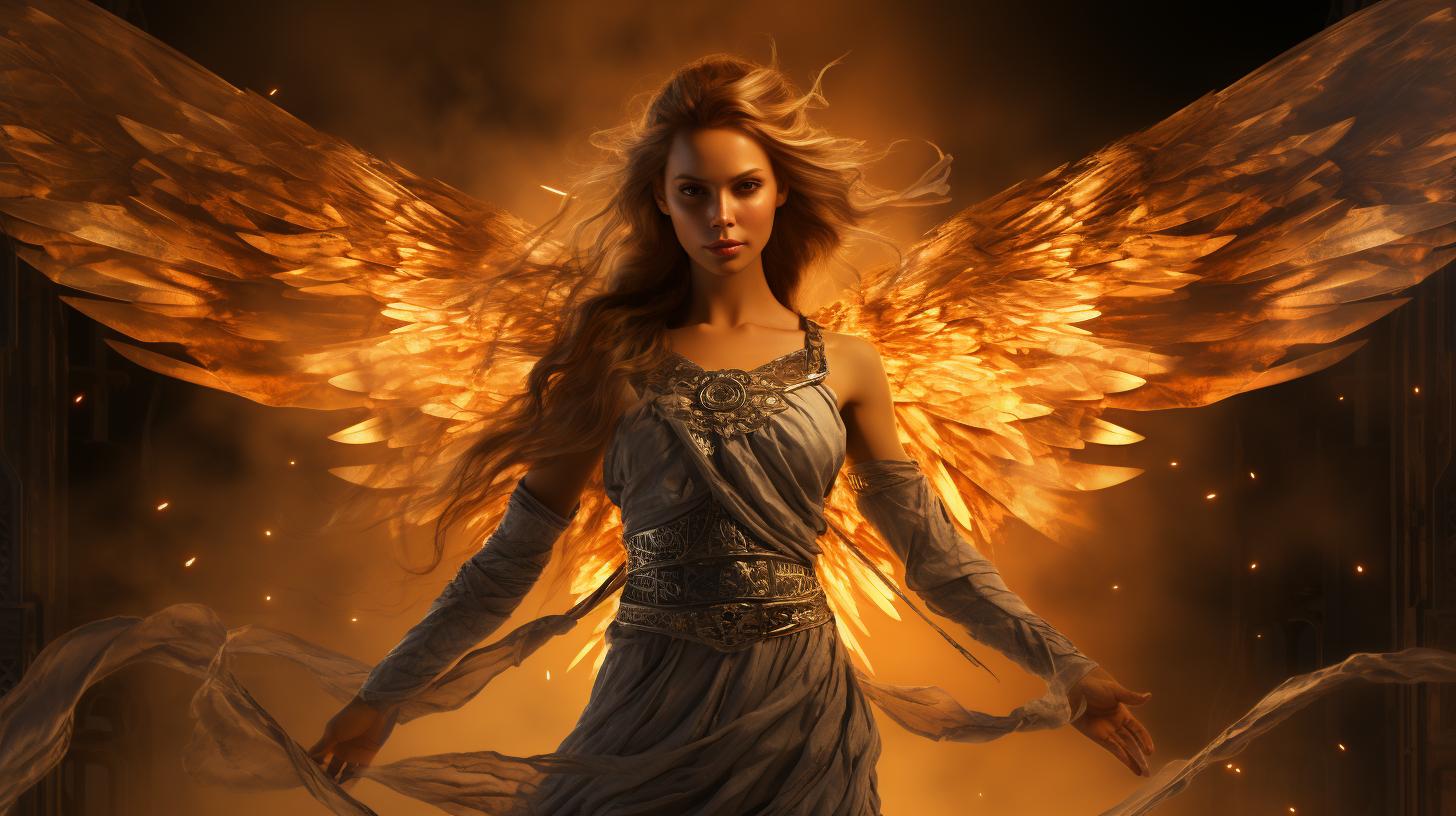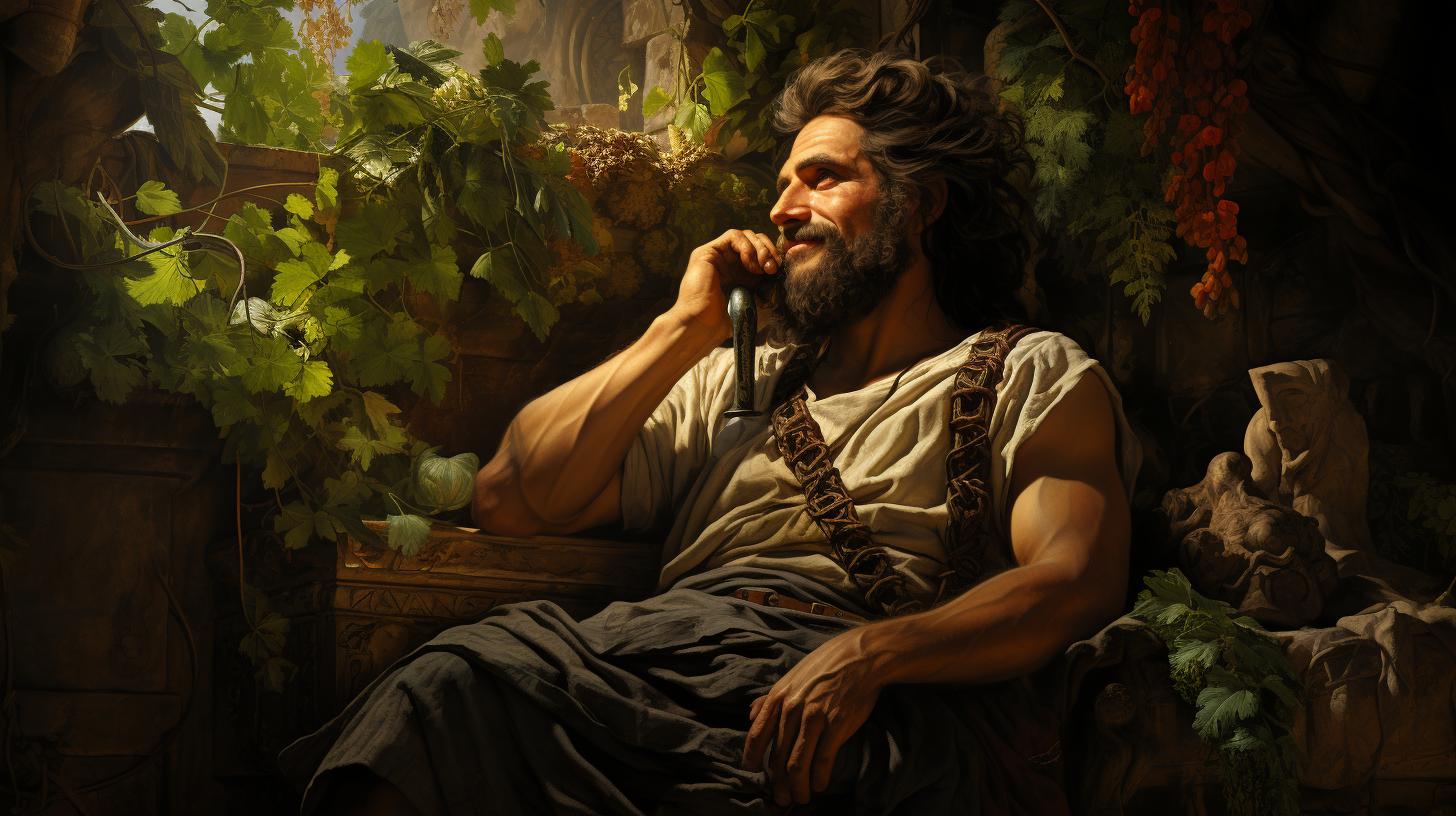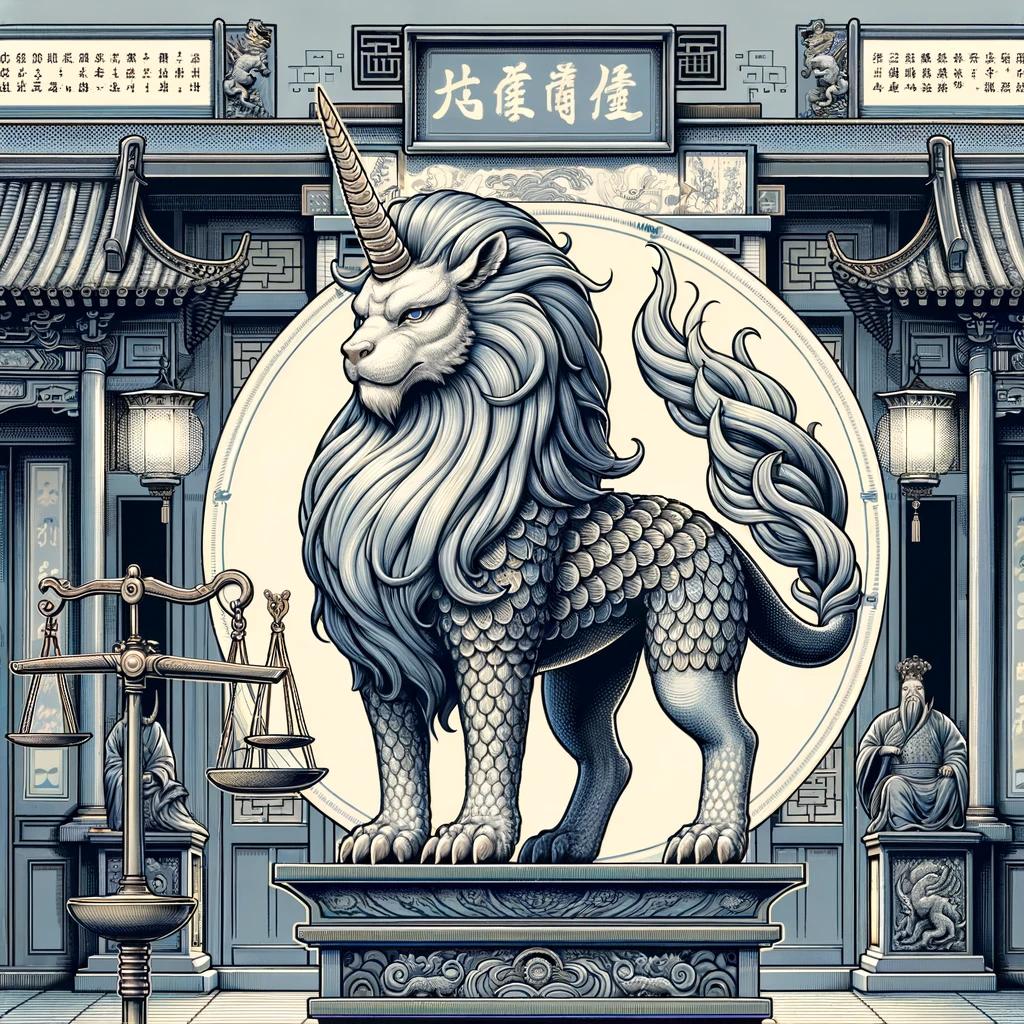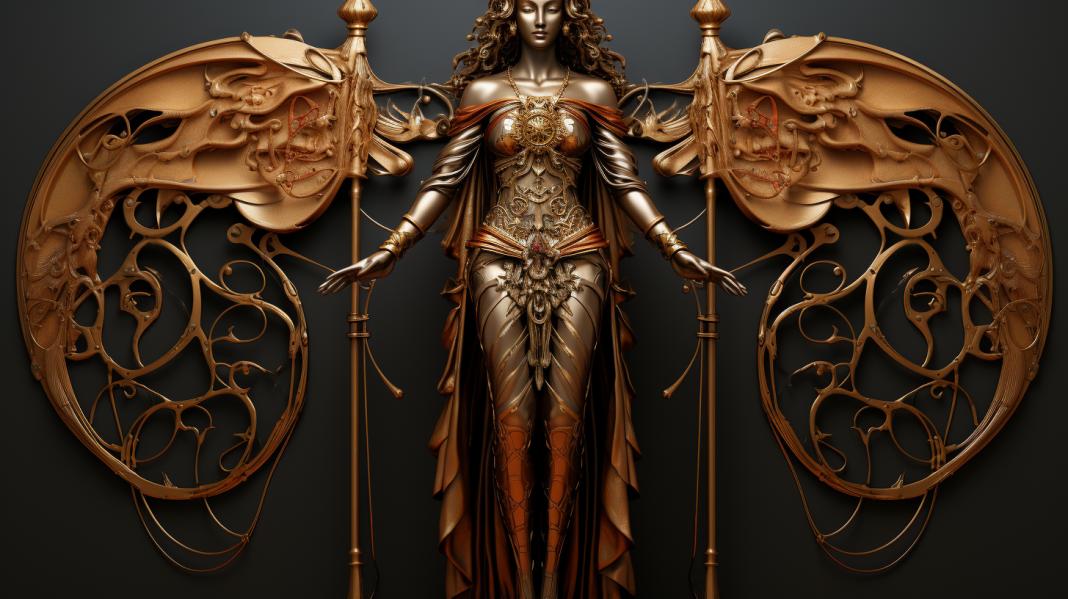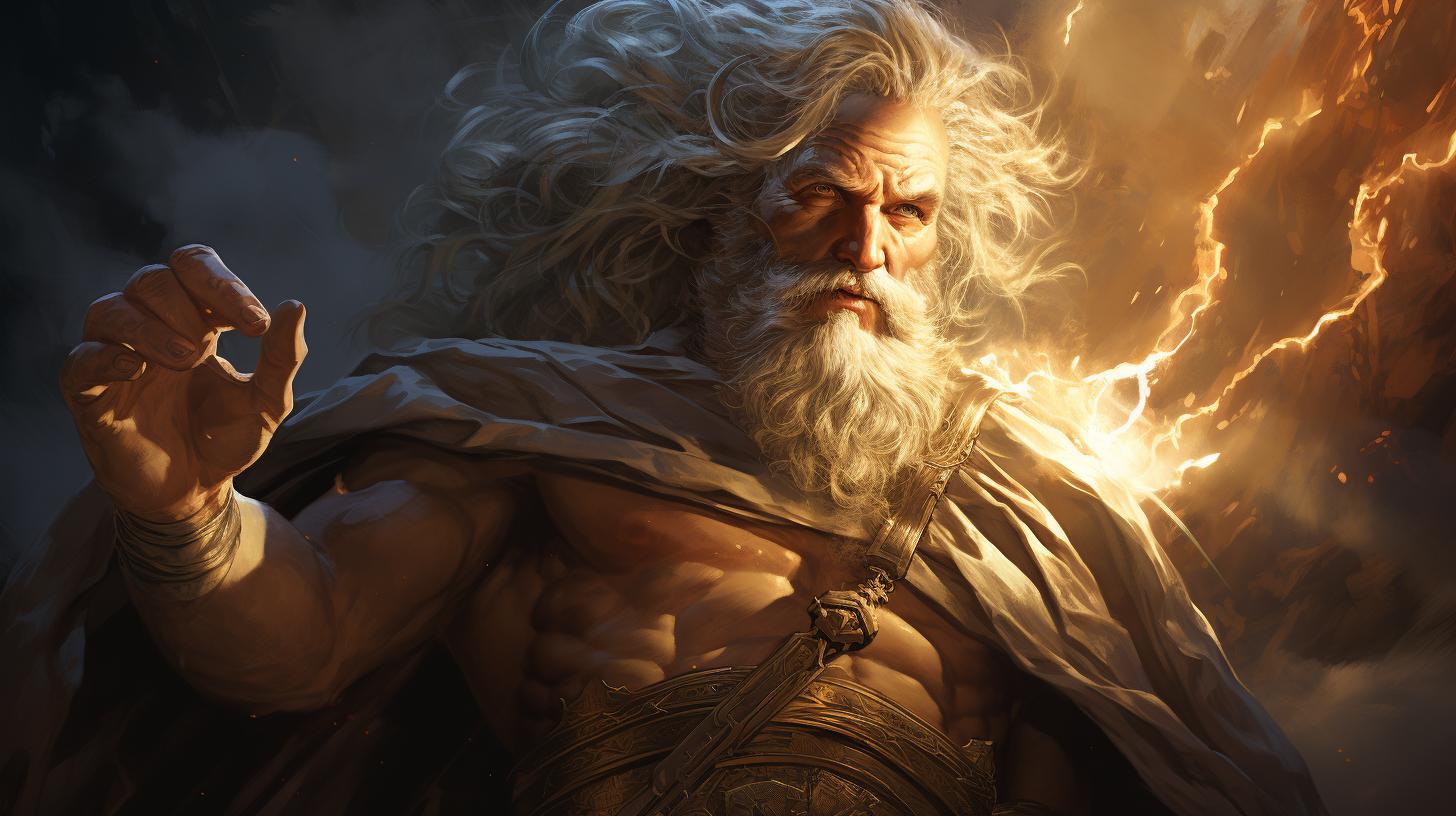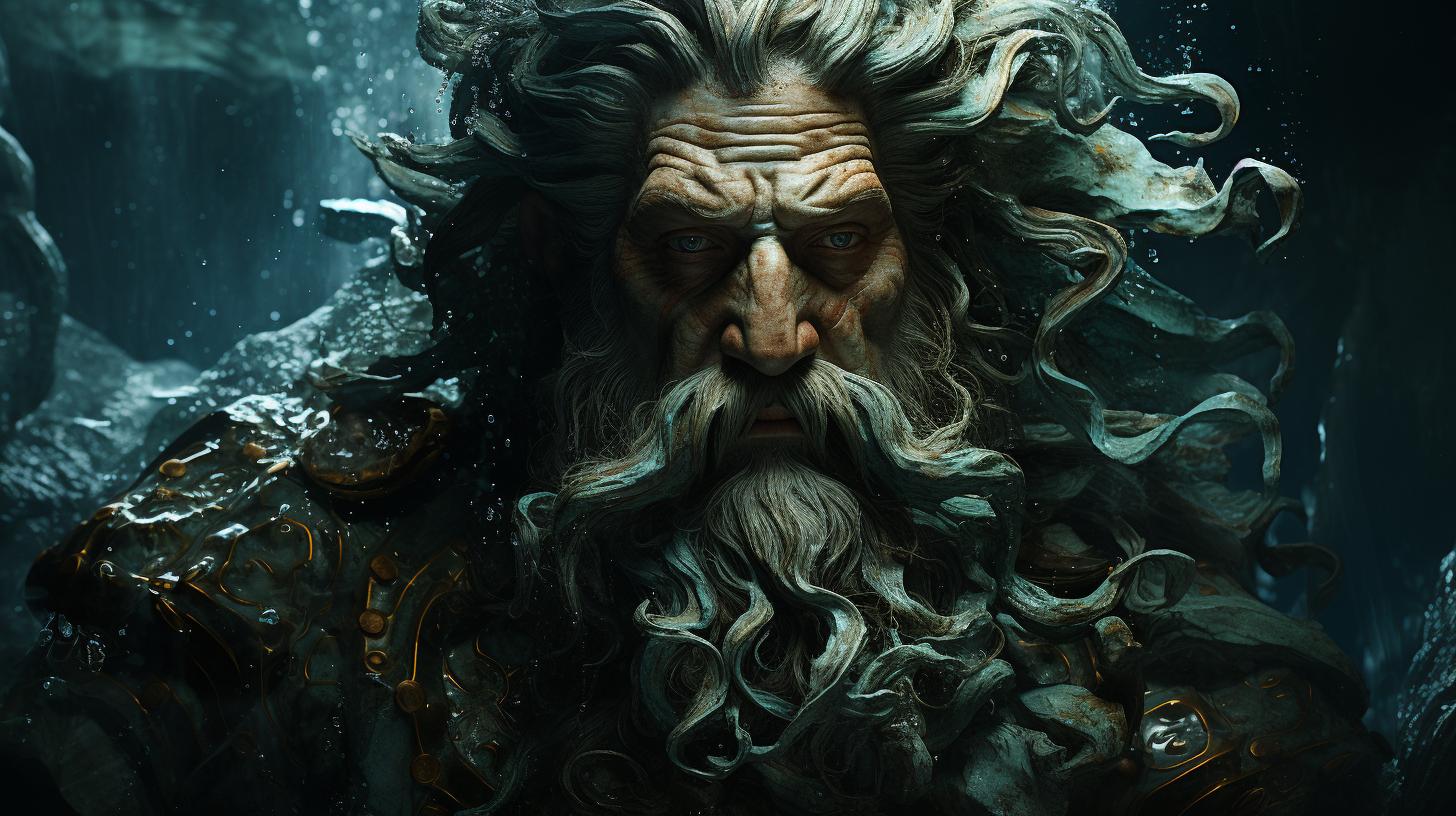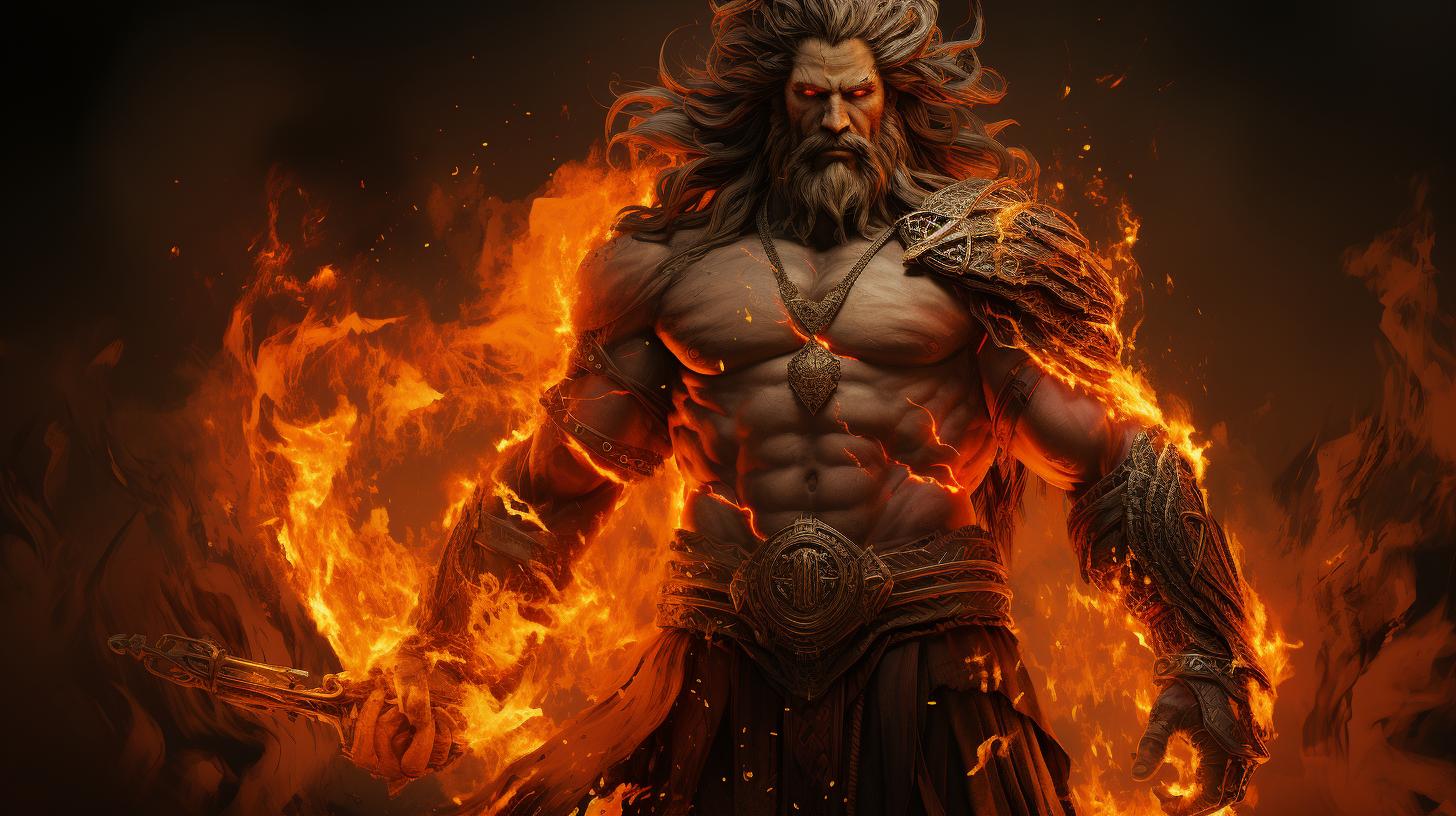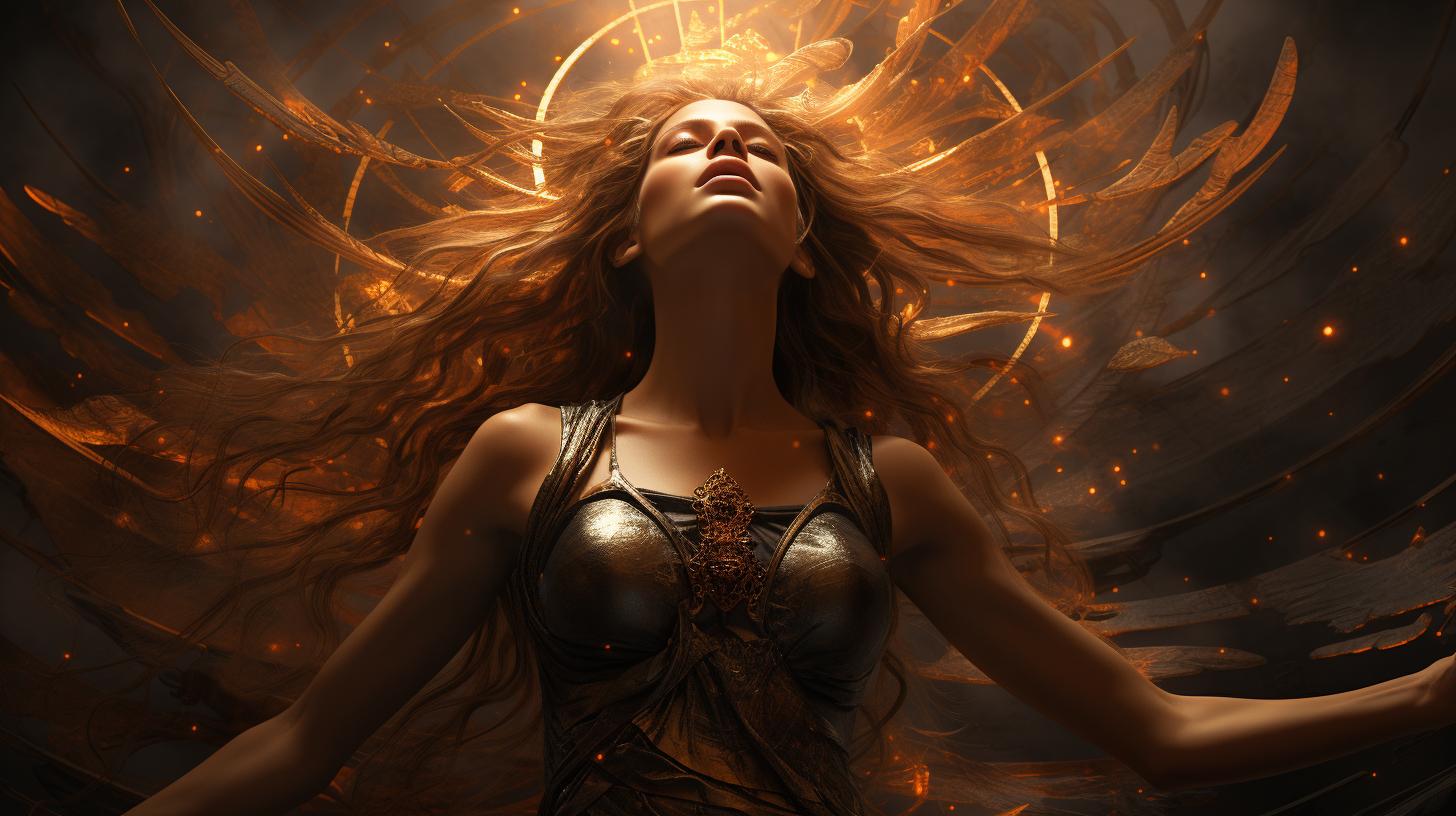Vanth Etruscan Goddess: Unveiling the Mysteries of the Underworld
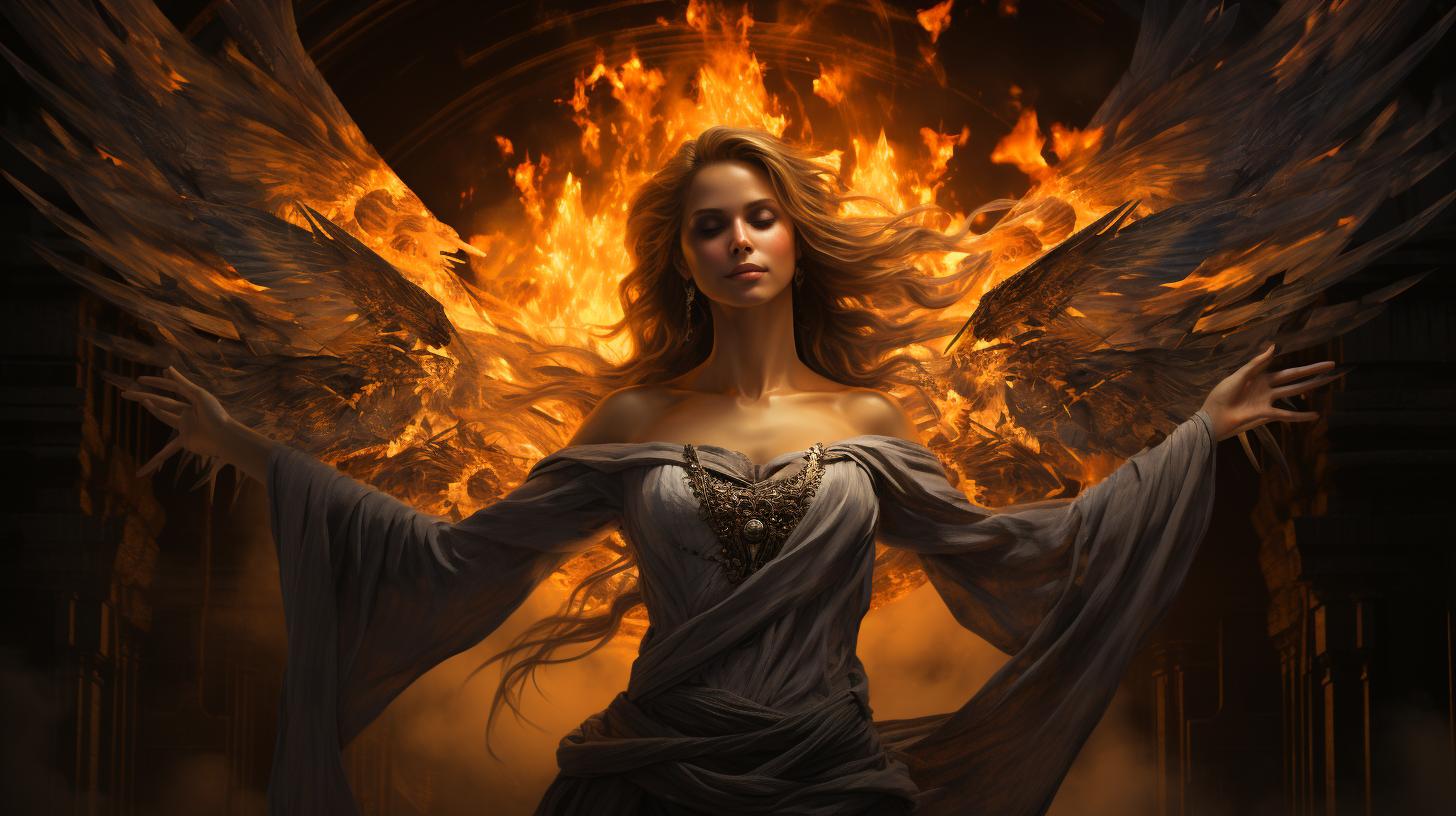
Vanth Etruscan goddess holds a significant role in Etruscan mythology, particularly associated with the realm of death and the underworld. Represented as a winged female figure, Vanth is often depicted alongside Charun, the Etruscan guardian of the underworld.
As a possible psychopomp, Vanth guides the souls of the deceased to the afterlife. Her distinctive attire and symbols, such as the torch and key, convey her active and protective nature.
While Vanth’s origins remain uncertain, her presence in Etruscan art and beliefs showcases her enduring significance in their culture. Unraveling her mysteries sheds light on Etruscan religious practices and beliefs.
The Origins of Vanth in Etruscan Mythology
Unveiling the Etruscan Pantheon
Etruscan mythology holds a rich tapestry of deities and supernatural beings, each with their distinct roles and significance.
Within this pantheon, Vanth emerges as a fascinating figure enshrouded in mystery and intrigue.
Vanth: A Goddess of the Underworld
One of Vanth’s prominent roles in Etruscan mythology is her association with death and the underworld.
She is often depicted as a winged female figure with attributes symbolizing her connection to the realm of the deceased.
Comparisons to Greek Mythology: Erinias Influence
An intriguing aspect of Vanth’s mythology is the comparison drawn between her and the Greek Erinyes, also known as the Furies.
While Vanth shares some similarities with these vengeful Greek goddesses, her depiction and purpose remain distinct within Etruscan beliefs.
- Distinct characteristics of Vanth in Etruscan mythology
- Exploration of possible influences and connections between Vanth and the Erinyes
- Understanding the unique role and significance of Vanth in Etruscan religious tradition
As we delve deeper into the origins and mythology surrounding Vanth, we begin to unravel the intricate tapestry of Etruscan belief systems and gain insights into the cultural mindset of this ancient civilization.
Vanth’s Role as a Psychopomp
In Etruscan mythology, Vanth plays a crucial role as a psychopomp, guiding the souls of the deceased to the afterlife. This significant function highlights her association with death and the underworld.
Let’s delve deeper into the various aspects of Vanth’s role as a psychopomp.
Guiding the Souls of the Deceased
Vanth acts as a spiritual guide, leading the recently departed souls towards their final destination in the afterlife. As a psychopomp, she navigates the dark and treacherous paths of the underworld, ensuring that the souls reach their designated place with ease and safety.
Her presence symbolizes the transition from the realm of the living to the realm of the dead.
Symbolism of the Torch and Key
The torch wielded by Vanth serves as both a literal and metaphorical source of light in the realm of darkness. It illuminates the path, enabling the souls to find their way.
The key she carries represents her ability to unlock the gates of the underworld, granting access to the afterlife. These potent symbols emphasize Vanth’s guardianship and authority over the transitional journey of the deceased.
Vanth’s Interactions with the Underworld
As a divine figure associated with the underworld, Vanth engages in various interactions within this realm. She traverses its depths, ensuring that the souls encounter no obstacles or malevolent forces on their passage.
Vanth’s role in the underworld extends beyond mere guidance; she actively protects and safeguards the souls during their transition, establishing her as a vital presence in the realm of the afterlife.
Depictions and Attributes of Vanth
Vanth, the Etruscan goddess of the underworld, is vividly depicted in Etruscan art, showcasing her distinctive attributes and symbolism.
Vanth’s Iconography in Etruscan Art
In Etruscan art, Vanth is often portrayed as a winged female figure, emphasizing her association with the realm of the dead. These artistic representations provide insights into her role as an observer of death and the afterlife.
The use of wings conveys both her mobility and her ability to traverse between realms.
Wings, Eyes, and the Symbolism of Observance
Vanth’s large arched wings adorned with eyes serve as symbols of her observant nature. They represent her role as a guardian and watcher, constantly aware of the inevitability of death. Through her watchful eyes, she symbolizes the omniscience of death, ever-present and all-seeing.
The Distinctive Attire of Vanth: Active and Protective Symbolism
Vanth’s unique attire further contributes to her characterization. She is often depicted wearing a short gathered or pleated skirt, two intertwined belts, short hunting boots, and a band or breastplate crossing between her breasts.
This attire gives her an appearance of activity and power, reminiscent of the goddess Artemis. It signifies her protective and benevolent nature, suggesting her role in guiding and safeguarding the souls of the deceased.
Vanth and Charun: Guardians of the Underworld
Exploring the dynamic relationship between Vanth and Charun sheds light on their roles as the guardians of the underworld in Etruscan mythology.
Exploring the Dynamic between Vanth and Charun
Vanth’s frequent portrayal alongside Charun indicates a close association between the two deities. While Charun is often described as the guardian of the underworld, it is important to recognize that Vanth holds an equally significant position.
They work in tandem, complementing each other’s responsibilities in guiding the souls to the afterlife.
Custodians of the Gateway to the Underworld
The combined presence of Vanth and Charun is commonly depicted as guarding the gateway to the underworld, symbolizing their role as custodians. As souls pass through this threshold, it is Vanth and Charun who ensure their safe journey and transition into the realm of the deceased.
Debunking the Servant Myth: Vanth’s Dominant Role
Contrary to the misconception that Vanth serves as a subordinate to Charun, artistic representations suggest that they stand as equals. Vanth’s prominent presence in Etruscan artwork and her active role in guiding the deceased indicate her dominant position.
She possesses unique attributes, distinct from Charun, emphasizing her independent authority and importance in the realm of the dead.
Vanth’s Benevolent Nature: Protector and Savior
Within Etruscan mythology, Vanth’s character exhibits a distant yet benign presence, symbolizing her role as a protector and savior. Let us explore the aspects that define her benevolent nature.
Vanth’s Distant yet Benign Presence
Vanth’s appearance may foretell death, but she does not directly cause it.
As a psychopomp, her role is to guide the souls of the deceased through the dark paths to the underworld. Her torch serves as a guiding light, illuminating the way for the departed.
Vanth’s distant nature suggests a compassionate detachment while fulfilling her solemn duty.
Presaging Death without Responsibility
While Vanth is associated with imminent or recent death, she is not responsible for bringing it about. Her presence serves as a precursor, signaling the transition between life and death. Despite this association with mortality, Vanth herself remains detached from the causation aspect, facilitating a more accepting view of death among the Etruscans.
Influencing Salvation: Vanth’s Protective Role
Some representations of Vanth depict her as an influential figure, capable of saving individuals from approaching death. This offers insights into her protective role within certain circumstances. Whether actively intervening or serving as a guide, Vanth’s benevolence extends to safeguarding the living, suggesting a deeper understanding of the delicate balance between life and death.
Vanth’s Significance in Etruscan Culture
Vanth, the Etruscan goddess of the underworld, held great significance within Etruscan culture, particularly in relation to death and funerary practices.
Vanth’s Connection to Death and Funerary Practices
As a goddess associated with death, Vanth played a crucial role in Etruscan funerary rituals. Her presence was often depicted on tomb monuments, symbolizing her connection to the deceased and the transition to the afterlife.
Vanth’s imagery and symbolism were intertwined with the Etruscan beliefs surrounding death and the journey to the underworld.
Vanth’s Role in Symbolizing the Inevitability of Death
Vanth served as a powerful symbol of the inevitability of death within Etruscan culture. Her distinct attire, including her wings adorned with eyes, symbolized her role as an all-seeing observer, representing the omnipresence of death.
Through her image, the Etruscans understood the inescapable nature of death and the need to embrace its presence.
Vanth’s Impact on Etruscan Religion and Society
Within Etruscan religion and society, Vanth’s presence and significance extended beyond her association with death. As a prominent figure in Etruscan mythology, she held influence over various aspects of life, including protection and salvation.
Vanth’s depiction as an active and benevolent goddess hinted at her role in safeguarding individuals in both life and death. Her representation in art and belief systems shaped Etruscan views on mortality, spirituality, and the afterlife.
Unearthing Vanth’s Legacy: Discoveries and Interpretations
The legacy of Vanth, the Etruscan goddess of the underworld, continues to captivate researchers and historians alike. Through archaeological findings, the deciphering of ancient scrolls, and the enduring influence on art and literature, we gain valuable insights into Vanth’s significance in Etruscan culture and religion.
Vanth’s Representation in Archaeological Finds
Archaeologists have unearthed intriguing artifacts that depict Vanth, providing visual evidence of her prominent role in Etruscan society. These findings include funerary reliefs and tomb paintings, where Vanth is often portrayed alongside Charun, guarding the entrance to the underworld.
These representations offer valuable glimpses into Etruscan beliefs and rituals surrounding death and the afterlife.
Decoding Vanth’s Scrolls: Insights into Etruscan Beliefs
The discovery of ancient scrolls containing Etruscan texts has been instrumental in unraveling the complexities of Vanth’s significance. Scholars painstakingly decode these inscriptions, revealing glimpses into Etruscan myths, religious practices, and the role of Vanth as a psychopomp.
These texts shed light on the Etruscan worldview, their understandings of death, and the rituals performed to ensure a peaceful journey to the afterlife.
Vanth’s Enduring Influence on Art and Literature
Vanth’s enchanting presence has inspired countless artistic interpretations through the ages.
From classical sculptures to contemporary paintings, artists continue to pay homage to Vanth’s mystique. Furthermore, her portrayal in Etruscan literature, such as the “Book of the Dead,” showcases her enduring significance in Etruscan storytelling traditions.
Vanth’s evocative imagery continues to captivate audiences, leaving a lasting imprint on the artistic and literary world.
Exploring Vanth in Modern Context
Vanth, the Etruscan goddess of the underworld, continues to leave her mark in various aspects of modern culture. This section delves into the different ways in which Vanth is explored and represented in contemporary art and media, as well as her relevance in modern spiritual and occult practices.
Additionally, we will highlight unanswered questions that fuel further research into Vanth’s enigmatic nature.
Vanth in Contemporary Art and Media
From paintings and sculptures to digital art and installations, artists today continue to be captivated by Vanth’s intriguing persona. Numerous artistic interpretations depict her as a powerful and otherworldly figure, often emphasizing her role as a guide to the afterlife.
Vanth’s presence in modern media, including literature, music, and film, also showcases her enduring popularity and the ongoing fascination with Etruscan mythology.
Vanth’s Relevance in Modern Spiritual and Occult Practices
Beyond artistic representations, Vanth’s symbolic significance extends into contemporary spiritual and occult communities.
Some practitioners draw inspiration from her role as a psychopomp, seeking her guidance in matters of death, transition, and spiritual exploration. Vanth’s association with protection and salvation also finds resonance among those who honor her as a guardian deity or invoke her assistance during rituals and ceremonies.
Unanswered Questions and Future Research
Despite the wealth of knowledge we have acquired about Vanth, numerous unanswered questions remain, and there is still much to learn about this enigmatic goddess. Future research holds the promise of uncovering further insights into Vanth’s origins, her exact relationship with the Erinias of Greek mythology, and the intricacies of her role within Etruscan society.
Continued archaeological discoveries, decipherment of ancient texts, and analysis of Etruscan iconography offer exciting avenues for expanding our understanding of Vanth and her cultural significance.
.











